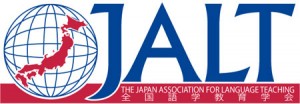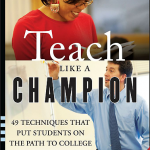curriculum EFL expectations language courses Language learning teaching theory
by sendaiben
2 comments
Best practice in teaching (are we doing enough?)
A great TED talk, courtesy of Marcos Benevides’ blog.
curriculum EFL eikaiwa expectations language courses teaching theory
by sendaiben
2 comments
Is it good enough?
Following on from my post the other day reviewing Teach Like a Champion, I’d like to talk about expectations.
This was actually provoked by something Steve Kaufmann mentioned last week on his blog: The Linguist on Language
He was talking about how learners need to be taught how to learn a language, rather than taught the language, something I very much agree with. It ties in well with several things I have been thinking about recently, so I would like to run through them briefly here (warning: this is going to be vague and unfocused).
This article on teachers’ use of English in high schools in Japan provoked a lot of discussion online (see Steve Herder’s note):
“Less than 20 percent of public high schools have been enforcing an English-only rule in their English conversation classes during the 2010 school year according to a survey, causing alarm at the Ministry of Education, Culture, Sports, Science and Technology (MEXT).”
While I agree that English classes in public schools should have more opportunities for students to listen to and use the language, I think this prescription from MEXT misses the point somewhat. Forcing teachers in one class (oral communication in high schools) to use only English, while all other classes continue to be run the same way, will not make a huge difference and could even have the unwelcome side effect of further alienating students.
I believe that more teacher training (teachers at the moment get comparatively little training), better teaching materials (the New Horizon textbooks for JHS only contain a total of just over 6000 words of text, over three years!), more supplementary materials to provide students with reading and listening input, and a move away from sentence level discrete vocabulary and grammar items on entrance tests.
However, IMHO the biggest factor is expectations (which tie into motivation and all that good stuff). Japanese students, on the whole, just don’t expect to end up as competent users of English, nor do institutions or teachers have the mindset that most students will develop internationally viable skills.
The question in this post’s title is one that I was asking myself after class the other day. Unfortunately, for me, the answer was no. What I was doing in class with my students is not good enough. It’s not going to get them where they need to be and it’s not going to motivate them to go out and put in the time they need to become proficient. I’m not sure what I would have to do to get my class to an acceptable place, but I have some ideas for changes I will make next year.
How about you? Are your classes good enough?
Amazon.com curriculum EFL eikaiwa ES expectations JHS kids reviews teaching The Book Depository theory university
by sendaiben
5 comments
Teach Like a Champion in Japan
Teach Like a Champion is a recent book by Doug Lemov. Despite the cheesy title, I found it interesting, inspiring, and useful, and heartily recommend it to any teacher facing classes (the techniques are probably less useful for teaching one on one).
The book was written from a US K-12 (kindergarten to twelfth grade) perspective, so is a perfect fit for teachers working in elementary or junior high schools. Not all of the techniques are suitable for high school or university students, but a lot of them are, particularly in Japan, so even teachers working at those levels should consider it.
Teach Like a Champion is based on a philosophy of efficiency (what works best for the most students in the least amount of time). It’s a mindset that I admire and have been trying to apply to my classes here for quite some time now. One of my favourite parts of the book is where Lemov talks about the opportunity cost of activities:
“(reading) is a high-quality activity (when done efficiently) that can be carried out in any classroom, at any time, and with limited additional preparation or expense required. You can always invest any stretch of time, short or long, in meaningful reading and reap a strong and predictable retun. Furthermore, if you know you could always be doing meaningful reading -in any class, at any time -you can examine your other investments of time critically: do they exceed the value of meaningful reading? Are they potentially higher return but riskier and therefore should be balanced with something more reliable? As you ask these questions, you may well find that reading crowds out some of the other ways you invest your time.”
This mindset permeates the book, and makes it very persuasive. The idea of the opportunity cost of classroom activities is a simple one that I had never really thought about specifically. On reflection, my benchmark activity teaching English in Japan is extensive reading. Now, for me to do something else in class requires that it be more profitable than ER. Using this idea makes a huge difference to lesson planning.
I really like how Lemov brings a critical eye to classroom practice, making the overall tone of the book one of experimentation. The bulk of the book, however, is taken up by 49 very specific teaching techniques. Lemov claims that after observing hundreds of masterful teachers, he found that many of them were using the same strategies and activities, which he describes in Teach Like a Champion. There is also an online supplement with videos of the teachers in question using the techniques. In my opinion it is worth buying the book just to get access to this resource.
Teach Like a Champion is not perfect. It can feel a little cultish at times (all the techniques have names, which Lemov explains as being necessary in order to clearly convey what he is talking about, but names like “at bat” or “pepper” sometimes feel a bit silly), and the focus is very much on the US K-12 system. However, most of the techniques are universal, and I have successfully implemented them with both small group eikaiwa kids and university classes. All things considered, Teach Like a Champion is one of the best books on teaching I have read (I’ve actually read it twice, and am about to re-read it again to refresh everything), and a couple of friends who have also read it feel the same way.
Unfortunately it doesn’t seem to be available through Amazon.co.jp, so I ended up buying the Kindle version from Amazon.com and reading it on my iPhone, but it’s worth getting a copy sent from the US. For a free postage and packing option, check out The Book Depository.
* Disclaimer: the links in this review are affiliate links. If you click on the links and then buy the product, Amazon or The Book Depository will pay me about 3% of the cover price. This comes out of their profits, it does not make the product more expensive for you than buying it normally. Think of it as a tip to this blog. Of course, if you prefer, you can go straight to their websites and search for the book yourself. I won’t hold it against you 😉
conference curriculum EFL expectations JALT language courses Language learning presentations teaching testing theory university
by sendaiben
leave a comment
Raising Expectations, Measuring Results
It was a great honour to be asked to present on student learning outcomes by OUP. I seized the chance to talk about how important expectations are, how raising expectations (of students, teachers, and institutions) is likely to be the key to improving English education in Japan, and how important effective assessment is. Of course I also talked about student learning outcomes and how useful the CEFR can be when thinking about our courses.
I had a great audience for this and thoroughly enjoyed the presentation.
conference curriculum EFL eikaiwa ES expectations Jelly and Bean Language learning presentations readers Reading teaching theory
by sendaiben
1 comment
JALT 2010 in Nagoya
 I will be presenting three times this year at the JALT National Conference in Nagoya, details as follows:
I will be presenting three times this year at the JALT National Conference in Nagoya, details as follows:
All You Can Read: the Extensive Reading Colloquium
Saturday 20th: 17:15 in room 1203 (sponsored by the Extensive Reading SIG)
Raising Expectations: Measuring Results
Sunday 21st: 13:00 in room 1102 (sponsored by OUP)
Phonics-based Reading Practice for Children
Sunday 21st: 17:05 in room 1103 (sponsored by englishbooks.jp)
Hope to see a lot of friends there!


